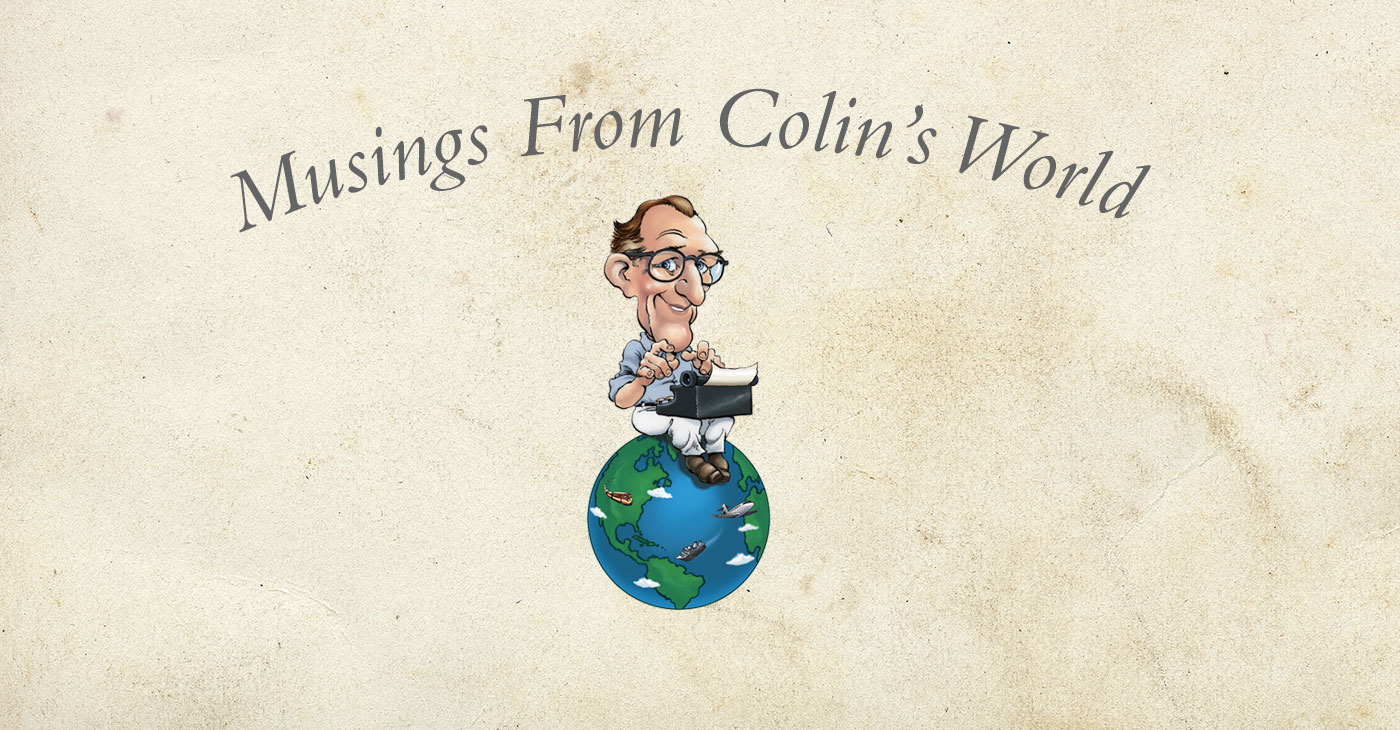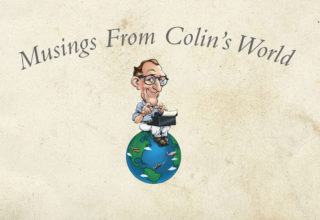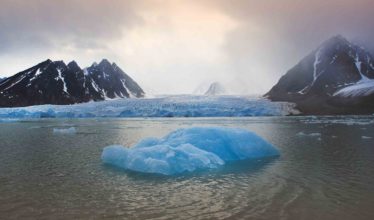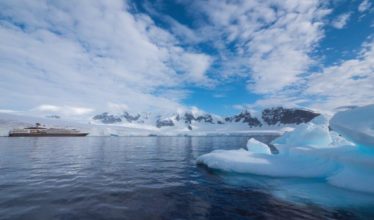When I discovered that there are tour operators who will take you to Antarctica, I immediately decided I wanted to go. It seemed the closest to interplanetary travel that I would be able to experience in my lifetime.
My bucket list was already overflowing with wondrous, exotic places with a great variety of cultures, climates and topography. But polar travel is in a class by itself. When you travel to the polar regions, it changes your fundamental orientation to the earth. I can only imagine what it’s like to orbit the earth in a satellite. But I can personally experience a trip to the highest latitudes, where the fundamental realities of the earth seem as alien to me as if it were another planet.
The otherworldly nature of the polar regions first struck me in a conversation with Hank, a guy I met in a nightclub in Winnipeg. He had just come off a three-month tenure at a U.S. base in a place called Tuktoyaktuk, way up north inside the Arctic Circle. He talked a lot about Tuktoyaktuk. It reminded me of science fiction stories about living on other planets.
In the winter, he said, the sun disappeared for months at a time, and at the height of summer the sun never set. It just moved in a circle at a 60-degree angle. The image of the sun moving in a circle around the sky sent my mind into spins. I really wanted to experience something that otherworldly. Hank’s tales were so intriguing I considered signing on myself, but never got around to it.
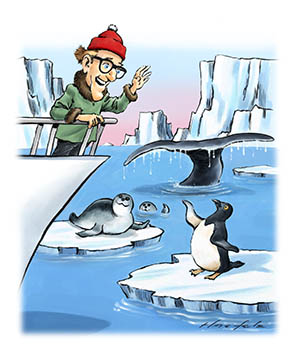 Voyage to the Bottom of the World
Voyage to the Bottom of the World
It was decades before I discovered a way that I could travel to the polar regions without having to sign up with the military. When I learned about travel to Antarctica I got onto one of the expeditions as soon as I could arrange it. It sailed out of Ushuaia, the capital city of Tierra del Fuego, at the southern tip of the Americas, cross the Drake Passage to the Antarctic Peninsula, about 600 miles from South America.
I didn’t travel to the South Pole as Hank had, and I only spent a week in Antarctica, but it was an experience that would change the way I experienced life on earth henceforth. The experience is imprinted indelibly on my memory as clearly as if it happened last week.
After being rocked to sleep my first night on the Drake Passage I awoke to realize we were on smooth waters. I leaped up and looked out my window onto glassy seas and an enchanted world that seemed impossible, unlike anything I had ever seen.
The sky was layered with dark, foreboding clouds as we glided along the mirror-smooth water surrounded with icebergs sculpted by wind and water into elaborate shapes. They appeared in a range of colors from white to crystal blue against a backdrop of black mountain peaks draped with pure white snow.
It was simply one of the most beautiful, astonishing sights I had ever witnessed. And it was only the beginning of several days of landings in inflatable zodiacs at various places.
That first encounter was a cloudy, moody day but we also experienced blindingly bright sunlight reflecting off broad expanses of snow. At one stop we climbed to the top of a snowy hill and surveyed the landscape and the icy waters. On Antarctic beaches we wandered among massive crowds of penguins who tolerated our presence quizzically. And we visited a thermal beach at the edge of a crater where steam rose from the rocky shore and the water was warm enough to go swimming.
Nature never confines itself to your expectations, and it was odd to realize one day that in the Austral summer in January I was standing on deck without a coat and it was warmer there than in New York.
It was daylight the whole time. The sun came near the horizon, but never went below it. The endless day had a strange effect on the body’s circadian rhythms. It made you want to stay awake because darkness never came to give your body the cue to go to sleep.
The Antarctic experience stretched my imagination in a thousand new dimensions. Our naturalist guides showed us what to look for to get the full measure of fascination from being there.
The naturalists disabused us of the notion that the Antarctic is barren and lifeless. It is a vibrant ecosystem supporting an abundance of life forms, from plankton to penguins, seals and whales. Though the penguins may look comically awkward when they walk on land, when they swim they become the embodiment of grace and speed.
We saw giant leopard seals, research bases, ancient abandoned seacraft, breathtakingly tall cliffs, a seemingly infinite stream of things I never saw before or even thought about.
The Antarctic ground was not dirt, as we know it. There were no plants there to decompose and create dirt. It was gritty, black gravel that contrasted starkly with the white snow. It was a full palate of astonishing experiences in the few days we were in Antarctica.
On the way back, the Drake Passage was smooth.
The Drawing Power of the North
Now, after seeing Antarctica, and so many years after hearing vivid stories about the Arctic from Hank, I find myself drawn back to the north.
In recent years the northern polar regions have become some of the most sought-after tourist destinations in the world (normally referred to as “hot destinations,” but that expression seems singularly out of place here). Iceland has become one of the favorite elite destinations of the insider’s insiders. Iceland attracts three times more people in a year than live on the island.
The mysterious land of “fire and ice,” combining ice, snow and glaciers with volcanic activity and thermal springs, the mystifying cosmic phenomenon of the Northern Lights, and a modern, tuned-in civilization in the city of Reykjavik, make Iceland one of the freshest, most stimulating travel experiences possible today.
As experienced travelers continue to expand their frontiers, the northern polar regions have ignited the imagination of the traveling public. The extreme north has much of the same otherworldly appeal as the south, but with a number of added benefits, including large land animals such as polar bears and reindeer, as well as seals and walrus colonies, Arctic foxes and wolves and puffins.
In the north you can sail closer to the pole, and the North Pole, on the Arctic Sea, is surrounded with land masses where indigenous people have lived in that frozen world for millennia. And of course, if you live in North America or Europe, the north is much closer and more easily reached.
While the South Pole is surrounded by a massive continent, which becomes more barren the closer you get to the pole, the North Pole is covered with water surrounded by a ring islands so you can move freely and comfortably at the highest latitudes. Travel to the area today is all done on luxury ships that make it easy to travel in comfort well into the Arctic regions.
You can now travel from Norway half way to the North Pole to the island archipelago of Svalbard, which is only 650 miles from the pole itself. That is inside the Arctic Circle and you can observe such wonders of the north as calving glaciers, icebergs, massive snow-draped mountain peaks and steep, foreboding cliffs, and whales, the magnificent giants of the animal kingdom.
After such a mind-blowing experience at the bottom of the earth, I am eager to experience what it’s like at the top.
Maybe I’ll run into you there! Dress warm!
Your humble reporter,
A. Colin Treadwell
